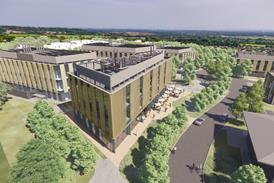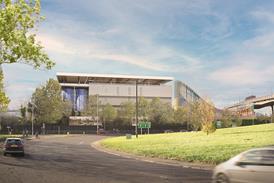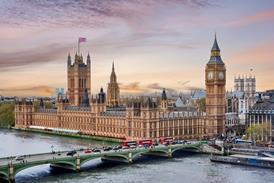The belief that architecture can save the world from environmental disaster is just a grandiose delusion. Much better that architects focus on what they can control, writes Robert Adam

From the 1920s, architects decided they weren’t just going to design buildings but were going to change society. This fantasy persists. It’s moved from the Bauhaus in 1923 – ‘we become the bearers of responsibility and the conscience of the world’ – to saving the planet today.
But how will architects do this? As architects they need to build or alter things. But to build or alter things you usually need clients, money and the ability to get your proposals through the regulatory system.
Architects have lots of fancy ideas but the lucky ones cut the mustard to become bit players in the much bigger social trends, economics and politics of their time.
The Arts and Crafts movement, called more accurately abroad, ‘National Romanticism’, fitted late nineteenth-century nationalism. As did Baroque revival in a different way.
The soup of stripped classicism, Art Deco, Modernism and mock Tudor mirrored the politically and economically messy inter-war period.
Modernism emerged triumphant after the Second World War as it suited the yearning for a new beginning.
Post-modernism came out of the chaos and disenchantment of the 70s and the boom of the 80s.
Iconic architecture was made by the globalisation of capital in the 90s and competition between cities around the world to be on the map for big business.
In the late 90s more and more architects began to take up the environmental movement. But it didn’t begin with architects. The Bruntland Commission had met in 1983 and the UN Earth Summit was in 1990.
Architects, dispirited by discredited modernist theory, the superficiality of Post-Modernism and the flashiness of iconic architecture, at last had a big moral cause again. They could save the planet.
To make themselves important, they twisted the figures.
That 40% of UK carbon emissions comes from buildings is trotted out again and again. True. But then most daily activity takes place in buildings. Construction is around 10%. How much can architects control even that?
From our assumed superiority we have already handed over control to project managers, QSs and architectural technologists
A bit, perhaps. But buildings are commissioned by clients with budgets. If super-sustainability doesn’t sell or stack up, it won’t be done. If an architect won’t do it, he or she won’t design it and will be relegated to an ivory tower.
What controls all this is regulation and demand – financially or politically. We’re back to being led by social attitudes, economics and politics. Not by architecture.
Being socially conscious and responsible is a good thing. But getting whipped up by joining the hyperbolic extremists doesn’t help.
None of us is saving the planet, as a planet. This spherical watery rock will carry on going around the sun until that dies or there is a cosmic collision.
None of us is saving life itself. Homo sapiens has been on this rock for a mere 200,000 out of 4 billion years of life. We might tragically mess up the nice place into which we evolved together with the creatures that evolved alongside us, but we will end up as extinct as tyrannosaurus rex one day. Bacteria have been here for 3 billion years and on that record will long outlive us.
And how much difference will we really make? The UK represents around 1% of carbon emissions globally. So, UK construction is 0.1%. The architectural contribution? Hard to calculate but much less.
There are bigger social, political and environmental arguments, of course, imported carbon-consuming products, high carbon output per capita, global leadership and so on.
And those who I’m sure will want to hammer me as an environmental heretic remember, I agree that environmentalism and climate sustainability are one of the defining orthodoxies of our era and of huge importance.
But to imagine that the architectural profession is going to save the planet or life is just hyperbole. Who, other than architects, pays much attention when architects proselytise?
We should make great efforts to advance the agenda of our times, as we will the next one. But walking away from designing what keeps out the weather, is socially acceptable, economically viable and politically permissible to puff ourselves up as morally superior, means we won’t design much at all.
From our assumed superiority we have already handed over control to project managers, QSs and architectural technologists. If we want to do good, we need to keep up our realistic skill-based influence in our small corner of the bigger world where it really can make a difference.
Refusing to do our work because we want to change society won’t change it. It will relegate our position into increasing irrelevance.
















22 Readers' comments